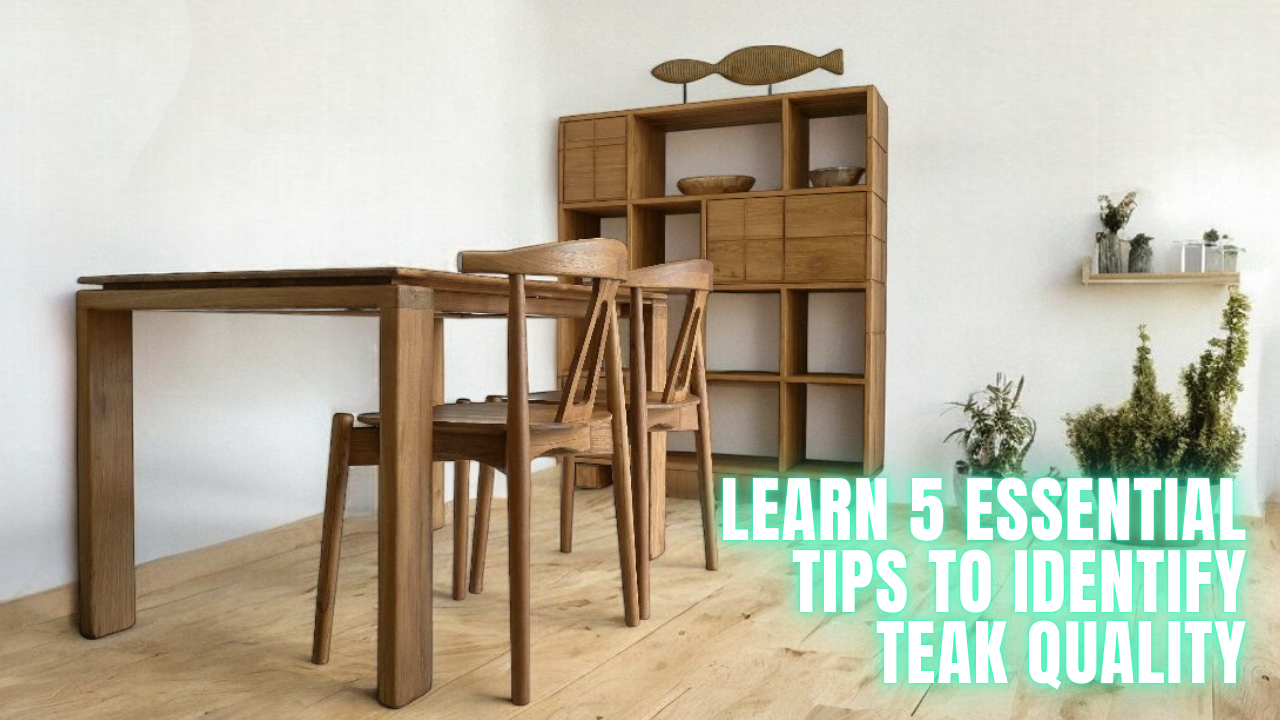In Singapore’s humid subtropical climate, consumers have a preference for Southeast Asian teak wood, known for its high oil content and ability to regulate temperature and humidity. But did you know? There’s also teak from the U.S., though it’s less common in the market. This is because American teak has a lower moisture content, making it less suitable for Hong Kong’s climate. When buying teak, there are many factors to consider, but most consumers are unfamiliar with them. Here, we share some tips on how to identify teak quality when purchasing furniture.
1. Distinguishing "Solid Wood" and "Hardwood"
These two terms are often confused. Experts clarify that "solid wood" refers to wood made from a single type of wood with similar age, ensuring consistent quality. "Hardwood," however, is not limited to one type of wood, making it less stable. To draw a comparison, solid wood is like single malt whiskey, coming from the same distillery, while hardwood is like blended whiskey, combining flavors from different sources. A simple way to identify quality teak furniture is if it’s untreated (without veneer or paint), indicating a high oil content and superior quality.
2. Understanding "Ink Lines" and "White Marks"
Remember learning how to read tree rings in school? Wood used for large furniture typically requires many years of growth. Wood closer to the tree's heartwood is older and more stable, while sapwood near the bark is younger and softer. In teak quality, sapwood is usually inferior, with fine, broken lines that appear whiter, known as "white marks." Heartwood, however, has bold, continuous grain patterns called "ink lines." Simply put, when selecting teak furniture, if the wood grain on the surface is continuous and the ink lines are clear, it indicates good quality heartwood was used.
3. Characteristics of Solid Wood Furniture
Solid wood furniture has different equilibrium moisture contents depending on the region: about 14-16% in Hong Kong, 8-10% in the U.S., and 10-12% in Indonesia. A 2% fluctuation in moisture content usually won’t affect solid wood furniture, but placing untreated American oak furniture in Hong Kong might cause drawers to swell and become stuck. Similarly, Indonesian teak furniture may crack when placed in the U.S. due to moisture releasing from the wood. These phenomena demonstrate the wood’s ability to regulate indoor temperature and humidity.
Therefore, solid wood furniture should not be placed directly under air conditioning, just as people shouldn’t stand in front of cold air for extended periods. Particularly for untreated wood furniture, direct air conditioning can disrupt the wood’s moisture balance, causing cracks. In environments with over 85% relative humidity and poor ventilation, solid wood furniture may develop mold. In such cases, use a slightly damp cloth with cleaning solution to wipe the mold, dry it with a hairdryer, and apply teak oil to prevent future mold growth.
4. Advantages of Teak Furniture
- Temperature and Humidity Regulation: Untreated solid wood furniture can regulate temperature and humidity, making homes with solid wood furniture more comfortable and healthy.
- Energy Efficiency: The capillaries in solid wood furniture help regulate temperature and humidity. Using a lot of solid wood furniture indoors can reduce the need for strong air conditioning in summer, saving energy.
- Sound Absorption: The capillaries in natural wood absorb sound, reducing noise and echoes in spaces with solid wood furniture.
- Anti-Static: Solid wood does not attract dust and is less prone to static electricity compared to materials like glass, plastic, and metal, making it healthier for the body.
- Non-Toxic and Natural: Untreated solid wood furniture contains no formaldehyde or lead, making it ideal for people with allergies.
- Warm and Friendly: Teak wood is warm in winter and cool in summer, offering a cozy, rustic feel compared to materials like marble or metal.
- Durable and Long-Lasting: As a hardwood, high-quality teak furniture has a high oil content, making it ideal for subtropical climates. Its use in luxury yachts highlights its superior durability compared to other woods.
5. Teak Furniture Care Tips
To maintain teak furniture, follow these guidelines:
- Use Heat Pads: When placing hot or cold items on teak furniture, always use heat pads to avoid leaving marks.
- Clean with a Dry Cloth: For oil stains, use a damp cloth with water or neutral cleaner, wring it out, and then wipe the surface with a dry cloth.
- Avoid Direct Sunlight and Air Conditioning: Prolonged exposure to direct sunlight or air conditioning can cause teak to expand and contract due to temperature changes.
- Prevent Scratches: Avoid dragging or rubbing items on the surface to prevent scratches.
- Prevent Staining: Teak contains high oil content, which can sometimes leak, even if it’s painted. This is normal. If in contact with light-colored items for extended periods, use cardboard, plastic sheets, or dust covers to prevent staining.

